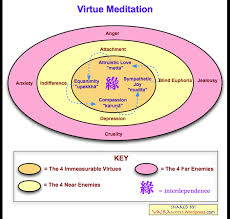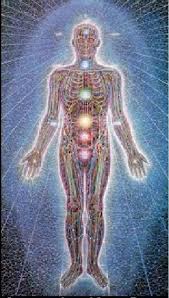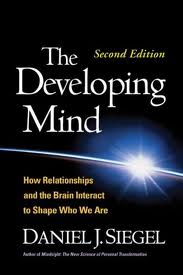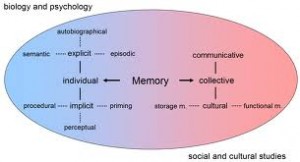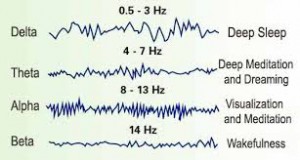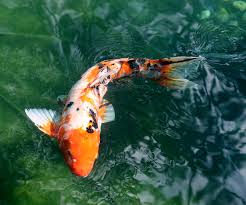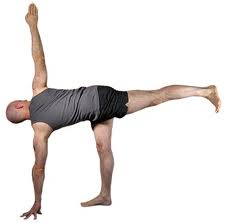Theme of Weekend 5: Emotions and Yoga: What are emotions and how can we use yoga to work with them intelligently and compassionately? What is the attachment process that we all experience as infants and throughout our relational lives and hoe does this relate to our emotions? (This is a year long course compressed into a weekend!)
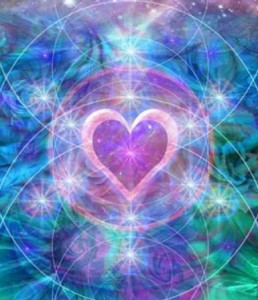 Meditation: “Resting in the Open Heart”: Find the balance of weight and lightness, release the breath, and visualize a sphere of light centered in the heart and radiating into the space around you. Wait, rest here. Now visualize your center channel opening from the heart up through the crown chakra into the heavens, and down through the root chakra into the earth. Allow the energies of heaven and earth to pour in to your heart center and receive this as divine love. Let that love spread throughout your cellular body. With your heart energized, allow your own love to flow up and out into the heavens and down into mother earth. Then rest in place of balance with your open heart, earth and the heavens connected and clear. (This is an evolving process that may take a while…be patient! Remember, light is more powerful and accurate than energy: energy more powerful and accurate than structure; structure more powerful and accurate than thought.)
Meditation: “Resting in the Open Heart”: Find the balance of weight and lightness, release the breath, and visualize a sphere of light centered in the heart and radiating into the space around you. Wait, rest here. Now visualize your center channel opening from the heart up through the crown chakra into the heavens, and down through the root chakra into the earth. Allow the energies of heaven and earth to pour in to your heart center and receive this as divine love. Let that love spread throughout your cellular body. With your heart energized, allow your own love to flow up and out into the heavens and down into mother earth. Then rest in place of balance with your open heart, earth and the heavens connected and clear. (This is an evolving process that may take a while…be patient! Remember, light is more powerful and accurate than energy: energy more powerful and accurate than structure; structure more powerful and accurate than thought.)
Mantra Practice: Learn Om Purnamdah…, Om Saha na vavatu…., and Om namaste astu Bhagavan, so we can go further.
Sutras Discussion: There are not many sutras dealing directly with emotions, but many imply them. And sometimes Patanjali refers to thought, but really means the underlying emotional energies that enliven the thoughts. (If you are finding the sutras to be a bit dry, please immerse yourself in the Katha Upanishad. It is a bit ‘juicier’!)
I-33: maitri karuna mudita upeksha… is used by the Buddhists as well as the yogis and gives instructions on how to counter the negative emotions of envy or jealousy, disgust, the desire to inflict harm and intolerance, by cultivating the positive ones of loving kindness, compassion, sympathetic joy and equanimity. This process, called pratypaksha bhavana in sutra II-33 is described in contemporary neuroscience as a re-wiring of the circuits that run from the amygdala to the pre-frontal cortex. The hard wired tendency to fear and anxiety, coming from the organism’s innate desire to survive, can be over-ridden with practice and patience. (See Rick Hanson’s note below.) In sutra II-34, Patanjali describes in even more detail the action of negative emotions and actually repeats ‘pratipaksha bhavanam from I-33, cultivating the opposite feelings/thought/emotions.
In II-7 and II-8, as part of the discussion of the impediments to practice, the kleshas, 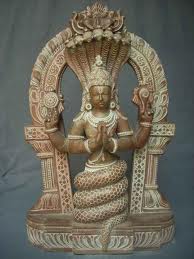 Patanjali introduces attraction and aversion, raga and dvesa. I desperately want/need this. I equally, absolutely have to eliminate this. These are fun to work with. Emotions move us. That is what emotions are, from the Latin e – motere, to be moved. But what truly moves us? Love, compassion, altruism, the desire to improve the world? Sometimes. But also the relentless ‘what about me’ voices that can also shape and direct how we utilize our life force, our prana. Meditation practice cultivates the ability to differentiate and discriminate the inner voices, to help restrain impulsiveness, and to choose more carefully how we act and what we say. Next weekend we will take up the yamas and niyamas, II-30 – II-45, with more unfolding of the emotional challenges of life.
Patanjali introduces attraction and aversion, raga and dvesa. I desperately want/need this. I equally, absolutely have to eliminate this. These are fun to work with. Emotions move us. That is what emotions are, from the Latin e – motere, to be moved. But what truly moves us? Love, compassion, altruism, the desire to improve the world? Sometimes. But also the relentless ‘what about me’ voices that can also shape and direct how we utilize our life force, our prana. Meditation practice cultivates the ability to differentiate and discriminate the inner voices, to help restrain impulsiveness, and to choose more carefully how we act and what we say. Next weekend we will take up the yamas and niyamas, II-30 – II-45, with more unfolding of the emotional challenges of life.
Question: What about attachment. Doesn’t vairagyam promote non-attachment? This brings us to the attachment process, a result of our mammalian brain/limbic system. Young mammals, and especially humans, need to have an intimate relationship with a more mature mammal, to ensure the growth and development of a healthy nervous system. The attachment profile describes the ways in which we enter into and sustain relationships with others (and aspects of ourselves!). (Here is a web site with some basic information on this.)
What we discover is that the fundamental attachment energy is love. In fact one can argue that love is the only emotion and all other emotions are variations on healthy and unhealthy expressions of love. This refers, of course, to unconditional love. No limits, no boundaries, no exclusions, the feminine side of an awakened mind. Of course, there are unhealthy expressions of attachment/bonding and for these we again need discrimination to be able to recognize these and ‘nirodh‘, or transform the energies carried in these behavioral patterns. Non-attachment means not being attached to the habits that keep reeking emotional havoc in your own mind, your loved ones and the world. It does not mean to be emotionally detached and passionless, but to live with a passion based on love.
This is what Patanjali is describing in I-2, yogash citta vrtti nirodha; yoga is the dissolution of the dysfunctional emotional patterns of the mind-field into the vast infinite present. But because of habits, priming and conditioning, collectively known as samskaras in Sanskrit, patterns that seem to have dissolved can reappear at any time. Which is why persistence in stabilizing the healthy emotions, abhyasa, is stressed early on in the sutras.
(Rick Hanson, co-author of Buddha’s Brain has a weekly letter with insights on integrating neuroscience and spiritual practice. His latest is perfectly timed to help in our discussion.
Hello,
It’s wonderful and also kind of crazy: right now, whatever you experience is slowly changing your brain.
Most of the good stuff we all want inside – the gratitude, kindness, grit, self-worth, confidence, feeling loved, resilience, compassion, insight, happiness, and inner peace – comes from turning passing experiences of these good qualities of mind and heart into lasting inner strengths woven into the fabric of the brain.
Unfortunately, there’s a bottleneck built into the brain: its evolved negativity bias that makes it like Velcro for bad experiences but Teflon for good ones – which makes it harder to turn beneficial experiences into inner strengths.
Meanwhile, feelings of stress, frustration, irritation disappointment, hurt, worry, and pain are being rapidly and efficiently coded into neural structure . . . relentlessly tilting the mind toward pessimism, anxiety, reactivity, contraction, drivenness, craving and clinging, weariness, and a blah blue mood.
Happily, you can use the power of mindfulness in everyday life to recognize and tune into wholesome experiences and then sustain present moment awareness of them. Since “neurons that fire together, wire together,” this mindful cultivation of beneficial thoughts, feelings, sensations, desires, and skills in your mind will naturally grow resources in your brain.
This week’s practice – be mind full of good – is a profoundly effective (and enjoyable!) path to psychological healing, well-being and effectiveness, sense of fulfillment, and the upper reaches of human potential.
Warmly,
Rick
Breathing Practice: Differentiating Ribs and Diaphragm through Viloma I and II
The heart or 4th chakra is the center of centers in the body/mind, but the 3rd chakra plays a key role in balancing emotional energies. By learning to feel our way around the mid body and deepen our perceptions of the breathing process, we can liberate a lot of bound up emotional energy. (As a response to danger the organism mobilizes its emotional energies to prepare for movement. It can flee (run using legs/ lower chakras), fight (using arms if human, claws and jaws for most, upper chakras), or freeze. The freeze response goes right to the diaphragm needs to be released.)
 Using folded blankets or a small bolster to support the spine and chest, let the body relax and feel your breath. Notice the in breath, the out breath, and the natural pauses between. Soften more and more. When the time is right, begin to allow the expanding ribs to be the main component of the inhalation, and the squeezing of the lower body pushing the diaphragm up into the chest be the primary component of the exhalation. Allow the ribs to stay a little more open as you exhale, allow the diaphragm to wait a bit on the inhale. Learn to differentiate between the ribs and diaphragm.
Using folded blankets or a small bolster to support the spine and chest, let the body relax and feel your breath. Notice the in breath, the out breath, and the natural pauses between. Soften more and more. When the time is right, begin to allow the expanding ribs to be the main component of the inhalation, and the squeezing of the lower body pushing the diaphragm up into the chest be the primary component of the exhalation. Allow the ribs to stay a little more open as you exhale, allow the diaphragm to wait a bit on the inhale. Learn to differentiate between the ribs and diaphragm.
The following is one of many variations of viloma pranayama.
Viloma I. From the ribs, inhale part way and pause. Holding the chest open release the sides of the diaphragm where they might be confused with the ribs, without releasing the breath. Repeat: using the ribs, inhale further, pause. During the pause, release the perimeter of the diaphragm and feel a subtle squeezing of the inner abdominal wall without releasing the breath. Repeat a third time and then release the breath slowly and evenly. During the pauses keep eyes, ears, throat and brain passive. That completes one cycle. Fee free to take a few normal breaths before beginning the next cycle if necessary. Also, the cycle given here has three steps. Feel free to do two, or many (like sipping the breath) if that feels better. When the last cycle is completed, relax and observe the breath.
Viloma II: Take a short but full inhalation and divide the exhalation into stages. Exhale part way, releasing the diaphragm but not dropping the chest. Pause and recharge the ribs so they stay open. Exhale step two, releasing diaphragm but slowing down the ribs;pause and recharge the ribs. Final stage of exhalation, natural pause, recharge the ribs softly. This completes one cycle. Rest and repeat cycles to one’s capacity. At the end, feel the changes inside that arise from the practice.
Anatomy/Kinesiology: In flipping the dog, the supporting shoulder is vulnerable to injury. 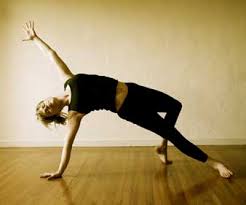 How do we train the arms to be strong and flexible simultaneously?
How do we train the arms to be strong and flexible simultaneously?
Shoulder problems arise here because the gleno-humeral (aka shoulder) joint tends to be hyper mobile and the shoulder blade/scapula hypo mobile. Thus it is easy to partially ‘dislocate’ the humerus bone when weight bearing in odd positions like this. The clue is to mobilize the shoulder blade and collar bone so they acts as a bridge connecting core-spine-ribs to the arm. If the scapula tracks accurately, there is no strain on the shoulder joint. The achromio-clavicular or ‘ac’ joint and sterno-clavicular joint also help stabilize the shoulder by bringing support from the sternum front/chest through the collar bone.
On the muscular side, the posterior rotator cuff can be over-active, especially in the arms to the side position. Stand with your arms extending forward, like a standing plank position. Feel how the humerus bone is stable in the joint in this position by following the line of energy from the spine and ribs through the shoulder girdle into the arms and out the hands .
Our quadripedal friends live here. To deepen the sensation, remember that the arms are made for hugging. To bring your arms out to the side, just opne the hug wider and wider, but keep the slight curve in the energy field. Notice when and if there is a break in the energy.
Most students eventually, unconsciously, move the arms and leave the shoulder girdle behind, mis-aligning the shoulder joint. Then they try to ‘stretch’ to open the chest. From the perspective of the energy body, this break is obvious, but you have to be there in the sensation to feel it. Try stopping before you get to 180 degrees, or imagine that you are just hugging an elephant. Explore one arm 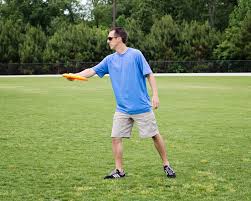 at a time by imagining that your are throwing a frisbee. The feeling is that of uncoiling the inner line of the body/arm, not contracting the outer shoulder, as the energy continues in a line out through the fingers and into space.
at a time by imagining that your are throwing a frisbee. The feeling is that of uncoiling the inner line of the body/arm, not contracting the outer shoulder, as the energy continues in a line out through the fingers and into space.
Asana Practice: Track action of third chakra/solar plexus/samana vayu energy and distribute it evenly into upper limbs and head / and lowers limbs and tail. Begin with standing poses, through dog and variations to inversions, backbends, (Saturday), forward bends (Sunday), then sarvangasana, variations as inspired, savasana.



